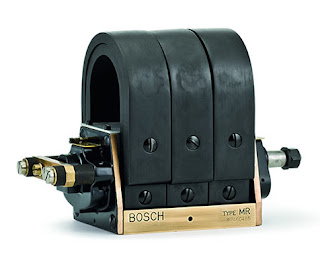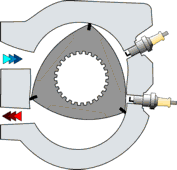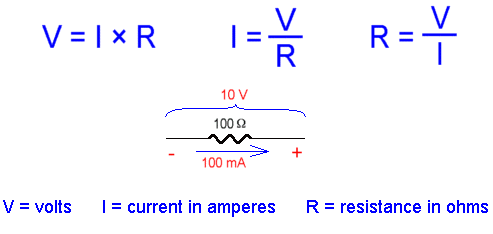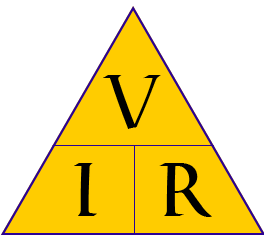Sijil Kemahiran Malaysia ( SKM )
Persijilan Kemahiran Malaysia merupakan salah satu fungsi utama Jabatan Pembangunan Kemahiran (JPK). Persijilan ini menawarkan lima (5) tahap persijilan iaitu :
 Sijil Kemahiran Malaysia (SKM) Tahap 1
Sijil Kemahiran Malaysia (SKM) Tahap 1
 Sijil Kemahiran Malaysia (SKM) Tahap 2
Sijil Kemahiran Malaysia (SKM) Tahap 2
 Sijil Kemahiran Malaysia (SKM) Tahap 3
Sijil Kemahiran Malaysia (SKM) Tahap 3
 Diploma Kemahiran Malaysia (DKM) Tahap 4
Diploma Kemahiran Malaysia (DKM) Tahap 4
 Diploma Lanjutan Kemahiran Malaysia (DLKM) Tahap 5
Diploma Lanjutan Kemahiran Malaysia (DLKM) Tahap 5
 Sijil Kemahiran Malaysia (SKM) Tahap 1
Sijil Kemahiran Malaysia (SKM) Tahap 1 Sijil Kemahiran Malaysia (SKM) Tahap 2
Sijil Kemahiran Malaysia (SKM) Tahap 2  Sijil Kemahiran Malaysia (SKM) Tahap 3
Sijil Kemahiran Malaysia (SKM) Tahap 3 Diploma Kemahiran Malaysia (DKM) Tahap 4
Diploma Kemahiran Malaysia (DKM) Tahap 4 Diploma Lanjutan Kemahiran Malaysia (DLKM) Tahap 5
Diploma Lanjutan Kemahiran Malaysia (DLKM) Tahap 5
Persijilan Kemahiran Malaysia boleh didapati melalui tiga (3) kaedah:
1. Melalui Latihan di Institusi yang Diiktiraf
Kaedah melalui program latihan kemahiran di pusat-pusat bertauliah JPK bagi bidang & tahap kemahiran yang tertentu dan telah ditauliahkan.
1. Melalui Latihan di Institusi yang Diiktiraf
Kaedah melalui program latihan kemahiran di pusat-pusat bertauliah JPK bagi bidang & tahap kemahiran yang tertentu dan telah ditauliahkan.
Contoh: Kolej Despark Auto (Pusat Bertauliah) menawarkan kemahiran dalam sektor kemahiran Teknologi Automotif Tahap 1, 2 & 3.
Para pelatih akan diajar kemahiran membaiki dan menservis kenderaan (70%) dan diajar teori operasi sistem serta komponen bagi sesebuah kereta (30%).
Kemudahan dan teknologi terkini disediakan bagi meningkatkan lagi kemahiran para pelatih mengikut peredaran semasa teknologi automotif.
2. Melalui Latihan Berorientasikan Industri (SLDN)
Kaedah latihan perantisan dalam Sistem Latihan Dual Nasional (SLDN) yang dijalankan di industri dan institut latihan kemahiran.
3. Melalui Pentauliahan Pencapaian Terdahulu (PPT)Kaedah mendapatkan Persijilan Kemahiran Malaysia melalui pengalaman lalu (kerja atau latihan) tanpa perlu menduduki ujian.
Calon dikehendaki mengemukakan bukti-bukti ketrampilan yang telah dimiliki untuk dinilai oleh Pegawai Penilai dan disahkan oleh Pengawai Pengesah Luaran yang dilantik JPK.
3. Melalui Pentauliahan Pencapaian Terdahulu (PPT)Kaedah mendapatkan Persijilan Kemahiran Malaysia melalui pengalaman lalu (kerja atau latihan) tanpa perlu menduduki ujian.
Calon dikehendaki mengemukakan bukti-bukti ketrampilan yang telah dimiliki untuk dinilai oleh Pegawai Penilai dan disahkan oleh Pengawai Pengesah Luaran yang dilantik JPK.
Faedah Persijilan Kemahiran Malaysia
 Persijilan Kemahiran diiktiraf oleh industri di Malaysia
Persijilan Kemahiran diiktiraf oleh industri di Malaysia Persijilan Kemahiran Malaysia menyediakan suatu laluan kerjaya dan pembangunan diri yang menarik setanding dengan laluan kerjaya berasaskan kelayakan akademik.
Persijilan Kemahiran Malaysia menyediakan suatu laluan kerjaya dan pembangunan diri yang menarik setanding dengan laluan kerjaya berasaskan kelayakan akademik. Persijilan Kemahiran Malaysia berupaya melahirkan pekerja mahir yang terlatih dan berkelayakan untuk mempertingkatkan daya saing industri tempatan di pasaran dunia.
Persijilan Kemahiran Malaysia berupaya melahirkan pekerja mahir yang terlatih dan berkelayakan untuk mempertingkatkan daya saing industri tempatan di pasaran dunia.
Syarat Kelayakan Menyertai Persijilan Kemahiran Malaysia
Syarat minimum menyertai latihan Persijilan Kemahiran Malaysia Kaedah Pertauliahan melalui Institusi Latihan yang diiktiraf, calon-calon mestilah :
 Boleh bertutur dan menulis dalam Bahasa Melayu atau Bahasa Inggeris
Boleh bertutur dan menulis dalam Bahasa Melayu atau Bahasa Inggeris
 Boleh bertutur dan menulis dalam Bahasa Melayu atau Bahasa Inggeris
Boleh bertutur dan menulis dalam Bahasa Melayu atau Bahasa Inggeris Mempunyai SKM tahap yang lebih rendah untuk menyertai SKM tahap yang lebih tinggi dalam bidang kursus yang sama.
Mempunyai SKM tahap yang lebih rendah untuk menyertai SKM tahap yang lebih tinggi dalam bidang kursus yang sama.
(* Walau bagaimanapun, Pusat Bertauliah boleh menetapkan lain-lain syarat kepada pelatih-pelatih mereka)
Pusat Bertauliah Persijilan Kemahiran Malaysia
Pusat Bertauliah bererti penyedia latihan kemahiran yang telah diluluskan oleh JPK untuk mengendali latihan kemahiran dan menawarkan Persijilan Kemahiran Malaysia bagi bidang dan tahap kemahiran tertentu berdasarkan Standard Kemahiran Pekerjaan Kebangsaan (NOSS).Terdapat 5 kategori Pusat Bertauliah, iaitu:-
- Pusat Bertauliah Awam (K)
- Pusat Bertauliah Swasta (L)
- Pusat Bertauliah Industri (I)
- Pusat Bertauliah Persatuan (P)
- Pusat Bertauliah Ujian Tanpa Musnah (NDT)






























 Always use manufacturers specifications and recommendations for adding oil to a system. Today's R134a systems use PAG (polyalkylene glycol) oil of different viscosities. PAG has replaced the mineral oil used in older R12 systems. This oil is highly hygroscopic meaning that it absorbs humidity from the air. Keep the lid on the container when your done and always add only the recommended amount for reasons mentioned earlier.
Always use manufacturers specifications and recommendations for adding oil to a system. Today's R134a systems use PAG (polyalkylene glycol) oil of different viscosities. PAG has replaced the mineral oil used in older R12 systems. This oil is highly hygroscopic meaning that it absorbs humidity from the air. Keep the lid on the container when your done and always add only the recommended amount for reasons mentioned earlier.




 This is a typical blower resistor, specifications and test procedures vary between different manufacturers.
This is a typical blower resistor, specifications and test procedures vary between different manufacturers.
 A battery cells specific gravity is a great way of measuring a batteries state of charge. This is because during a discharge the specific gravity decreases linear with ampere-hours discharged. The specific gravity also increases as the battery is recharged.
A battery cells specific gravity is a great way of measuring a batteries state of charge. This is because during a discharge the specific gravity decreases linear with ampere-hours discharged. The specific gravity also increases as the battery is recharged.